| Topics |
|---|
| Twilight Survey Droplet-like Reflections. |
| Additional Artifacts. |
| Discussion. |
Water Droplet-like Image Artifacts.
At the 2022 August 24th ZTF weekly meeting there was mention of image artifacts appearing in images from the
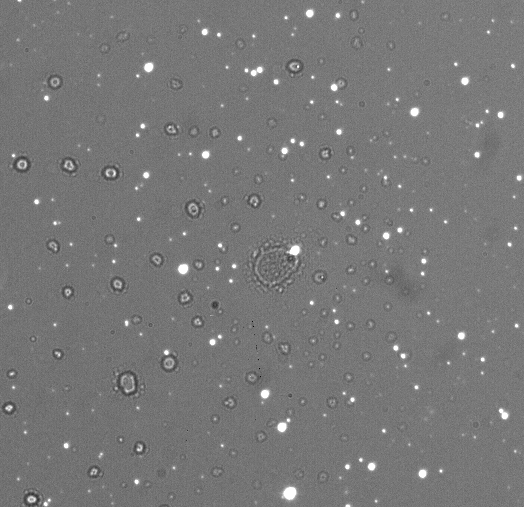
An example of a water droplet-like feature seen in ZTF images from 2022-08-22.
Examination of prior and subsequent images of the same image quadrant did not show the feature. Those observations were taken of different fields and thus different telescope point. However, additional images of the same field taken within a few minutes of the did show the same features.
The two images above a registered by their CCD pixel coordinates. What we see is that the water-like feature remains in the same location. However, some of the dark dustspot-like features move relative to the water droplet-like features. That is, the some dark spots move relative to the CCD pixel coordinates, while the water drop-like features do not.
The same features are seen in the raw frames and are not seen in ZTF flatfields used to reduce the images. So, the features are not associated with bad flatfields. ZTF flatfields mainly exhibit much larger features due to dustspots. Here we show the corresponding ZTF flatfield:
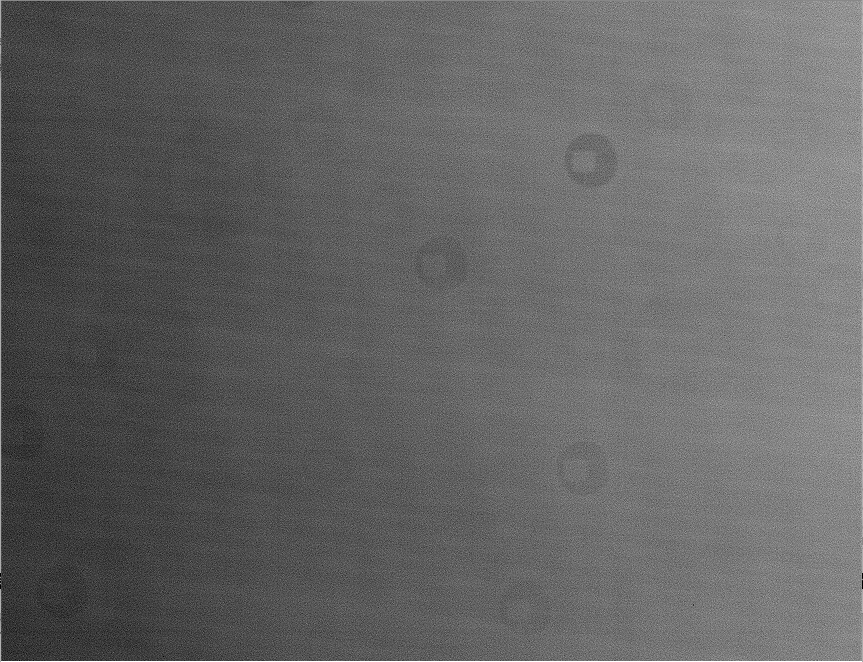
The ZTF r-band flatfield for 2022-08-22 corresponding to the same CCD, quadrant and region as shown above.
Additional types of Image Artifacts
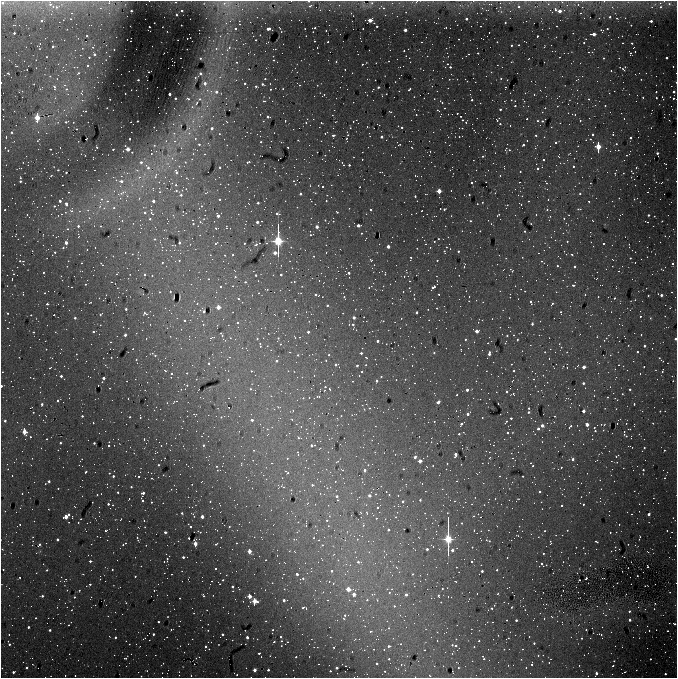
Full quadrant image from 2022-08-22 (F613, CCD2, q3).
For a larger view we show the full quadrant image from CCD2, q3. This image show numerous dark smudges that appear like dust spots. Additionally, in the top lefthand corner we see the semi-circular structure that is seen in PSF residuals. This suggests a possible link to the thickness of the CCD.
The artifacts seen in the images above are only present in a few of the ZTF CCDs. There features were only seen in CCDs 1,2,3,4,9,13. While other CCDs did not exhibit any features. The CCDs above do not appear to assocated since CCDs 1-4 are the bottom row (attached to different archons), while CCDs 9 and 13 are CCDs to the top-right in the layout.
The features seen within the images also vary between images. For example, most of the features are blurry, but some have very distinct edges. Some features appear narrow and curved like hairs, while others include a speckle pattern. A few of the features are bright, while most dark (light blocking).
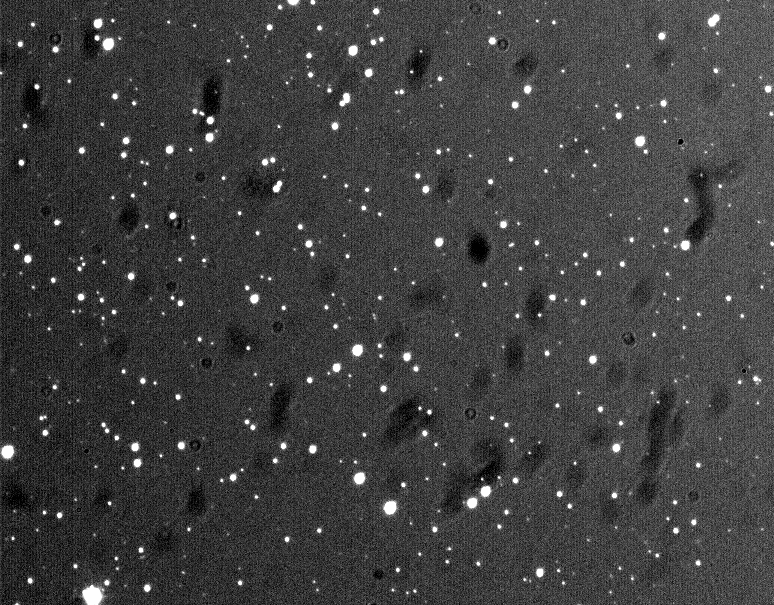
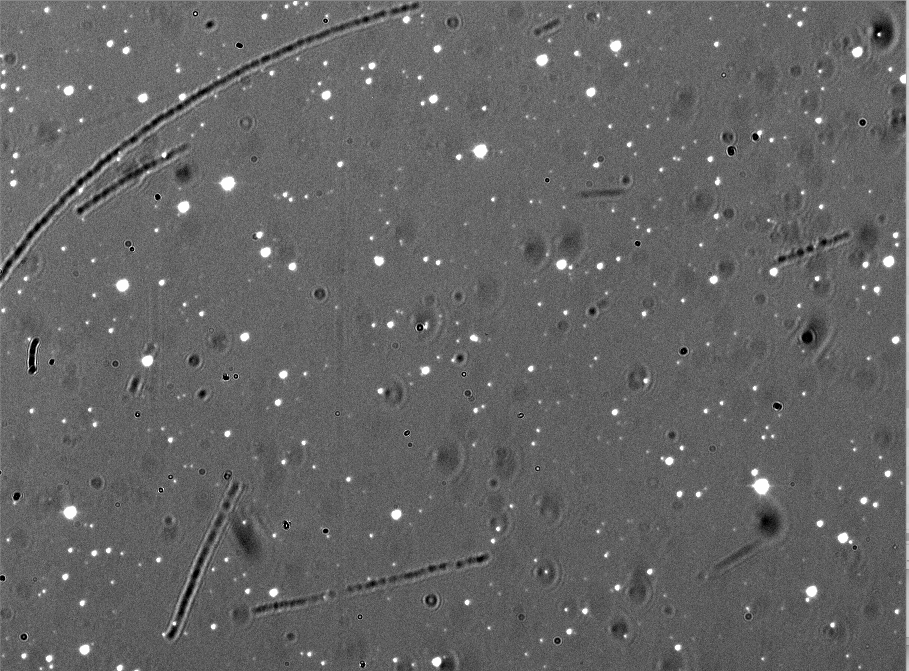
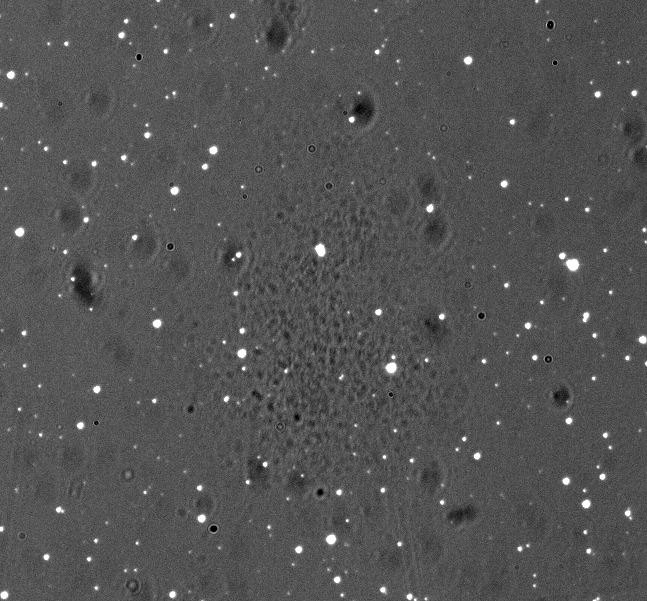
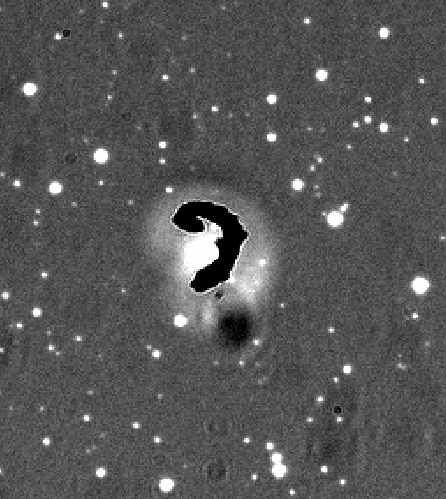
A closer view of the smudges and round dust-like features (left-top, CCD13, q3), Narrow arc features (right-top, CCD1, q3), patterned surface (left-bottom, CCD1, q3), light and dark distinct features (CCD3, q3),
A few images are seen to exhibit a very finely structured circular surface as shown below.
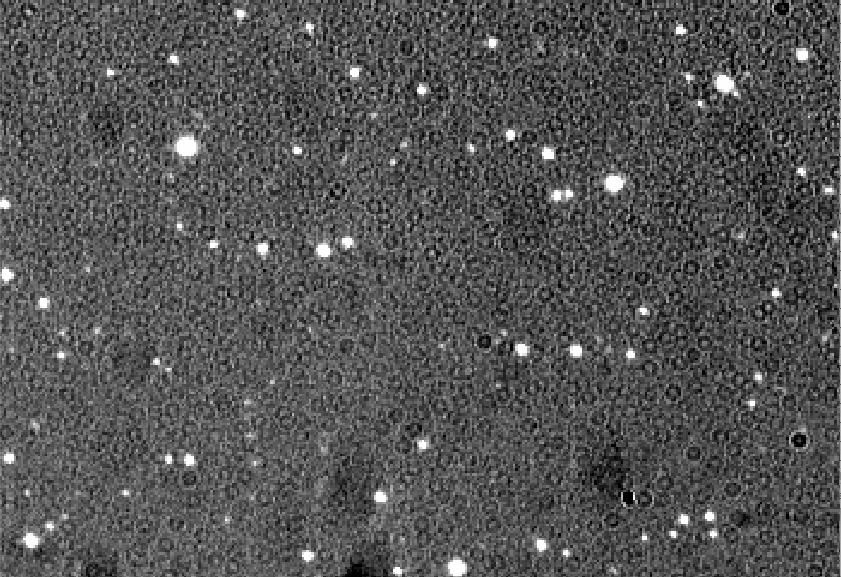
Circular-patterned surface structure (CCD4, q3).
Although it was noted that the features seen above had appeared on multiple nights, we inspected a few hundred twightlight survey images from nearby nights and did not find any similar artifacts.
Addionally we surveyed a large number of other observations of the same field from other nights using the IRSA. No similar features were seen.
Discussion
We have highlighted the image artifacts that were discovered in the ZTF twightlight survey. These artifacts are a mixture of bright, dark, diffuse, defined, extended and small features. None of the features appear to be related to electronics (no repeated patterns, or lines). However, the images are dominated be gradients from bright sources.Given that the features appear limited to a single field taken at a similar time it appears likely that the features are associated with reflections with the telescope due to a bright source. The dark dust features reduce the light relative to the higher background. There are likely additional more distinct features may indeed be due to a few hairs on a surface. The water droplet-like feature may indeed be a small amount of moisture on an optical surface. In this case the artifacts do no move relative to the camera like the dustspot-like features, very strongly suggesting they are on different surfaces.
The reason that the artifact are not seen in the images from all CCD from a single image is unclear. There do appear to be features in all quadrants from the CCDs where they appear. The reflection could have a limited extent and may be associated with optical elements that are specific to those individual CCDs. Since these features are apparently very rare within the archive, no correction for them appears necessary. However, an automated ML method for finding images affected with such features would be useful. This would enable such images to be flagged.